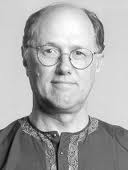Rewiring our Neural networks: Two Kinds of Mysteries
by George Wolfe
My mother loved to watch the television show “Murder, She Wrote” starring Angela Lansbury. Mom loved a good mystery, especially the kind that could be solved. Solving mysteries, I maintain, is a desire we all have, and mysteries that can be solved comprise one category of mystery. This category consists of things we don’t know but which are within our reach to uncover and understand.
Why were the giant moai statues on Easter Island carved, and how were they moved and set in place? Or, did microbial life ever exist on the planet Mars? These are examples of mysteries that could one day be solved.
Often, when these kinds of mysteries are solved, their solutions give rise to more questions and hence, more mysteries. One only needs to marvel at the most recent achievement of NASA and the New Horizon spacecraft’s flyby of the planet Pluto to appreciate this (Pluto is too a planet!).
But there is another category of mystery that people often overlook. This second category consists of things that are known, can be experienced, and can be appreciated, but when they are experienced, one recognizes there is something within them that is incomprehensible. One has encountered a phenomenon that is well beyond the human mind to fully grasp, the meaning of which is best expressed through poetry and art.
A good example is what scientists are saying now about the “Big Bang” that gave rise to the universe. Not only was all the matter and energy in the universe compressed into a “singularity” as a result of a force of “infinite gravity,” but time and space were also were contained within the singularity. Astrophysicists now envision the universe as “inflating,” much like a balloon, with time and space existing on the “surface” of the balloon. Albert Einstein’s theory of relativity demonstrates how space and time are interconnected. Space is “warped” by gravity, and time speeds up or slows down depending on the intensity of the gravitational field and the speed at which we are moving.
For the human mind, these conceptions defy our daily experience. While Scientists can verify them and know them to be valid, the human brain is not constructed in a way that can fully comprehend them. Our brains evolved to function in a universe where space has three dimensions and time is perceived as marching along as a separate, consistently steady variable. We evolved to survive in a universe as described by Isaac Newton, not Albert Einstein.
In his book on black holes and string theory (The Black Hole War, published by Back Bay Books), Stanford University Physicist Leonard Susskind writes of the need for us to “rewire” our brain’s “neural networks” to appreciate and recognize the illusory nature of the universe in which we live. More and more, the universe, and perhaps other universes as well, is taking shape to be what Carl Sagan referred to as “the grandest of mysteries.”
Fortunately, our brains have two “sides”: the one side consists of our rational cognitive faculties, while the other houses the faculties of intuition and insight. To the everyday pragmatic perception of the intellect, the universe of Einstein is paradoxical, even irrational. But to the intuition and faculties of insight, Einstein’s universe is fascinating and is draped in wonder.
Underlying the cosmos is a reality that stretches well beyond our imagination. It is a reality and a consciousness that humbles us and will be forever beyond our complete comprehension. And it is in the experience of incomprehensible mystery that the Omnipotent is revealed and we are able to glimpse the “Mind of God.” The words of the Sufi poet Rumi best apply to what should be our response: “The real work of religion is permanent astonishment.”
George Wolfe is Professor Emeritus and former director of the Ball State University Center for Peace and Conflict Studies. He also chairs the Muncie Interfaith Fellowship, is a trained mediator, and the author of Meditations on Mystery: Science, Paradox and Contemplative Spirituality.



